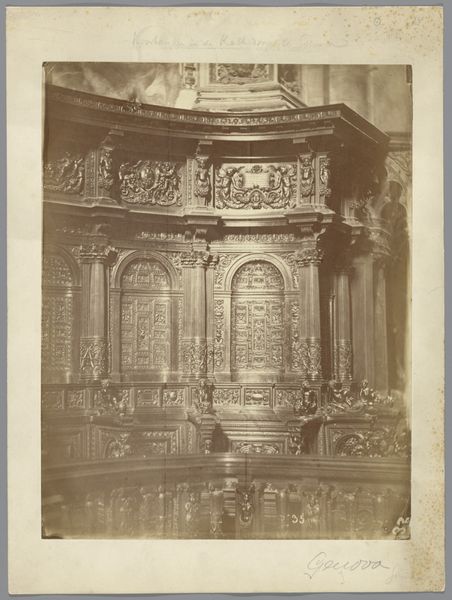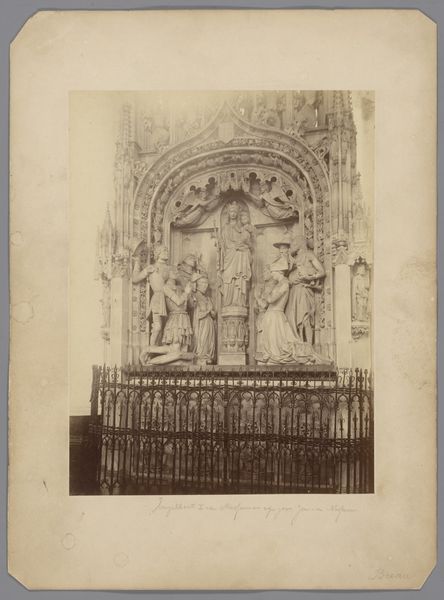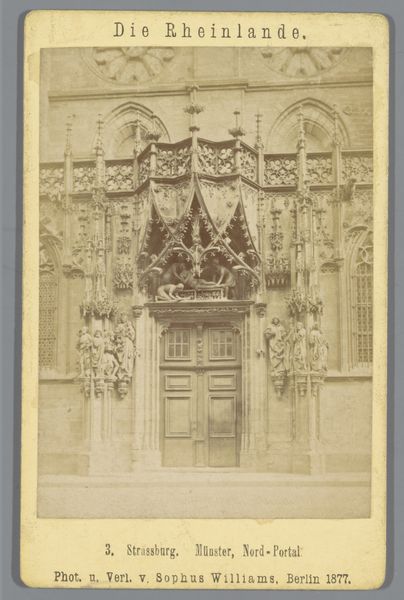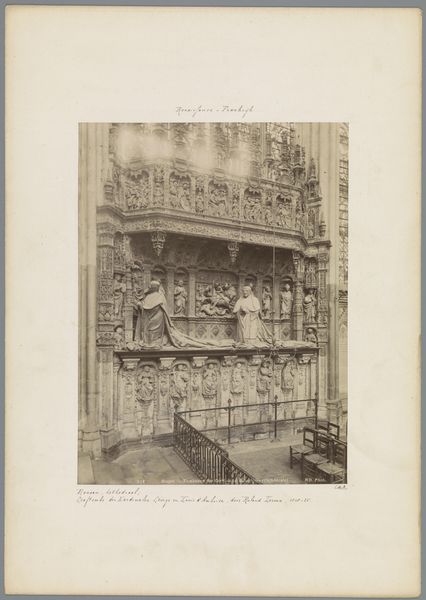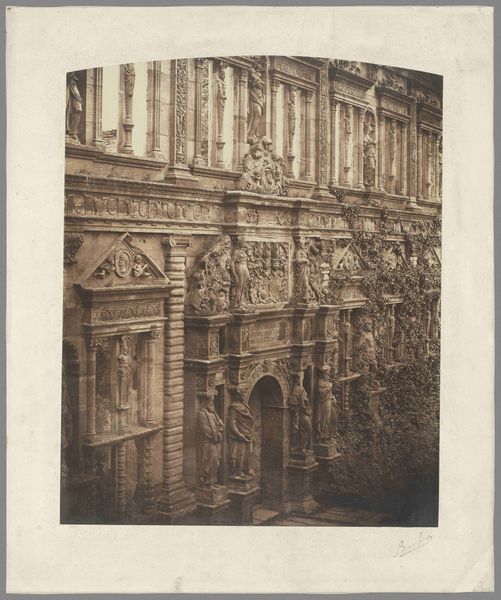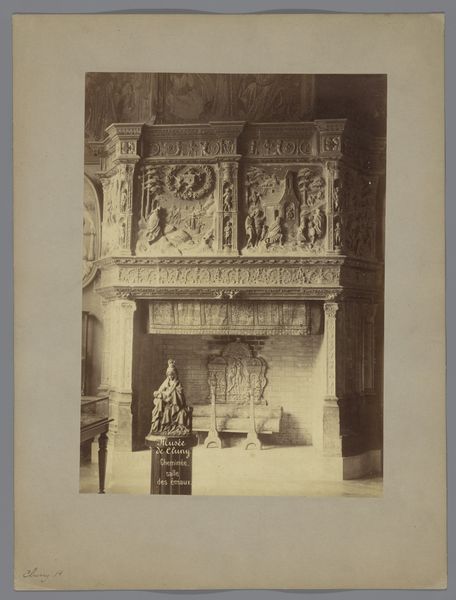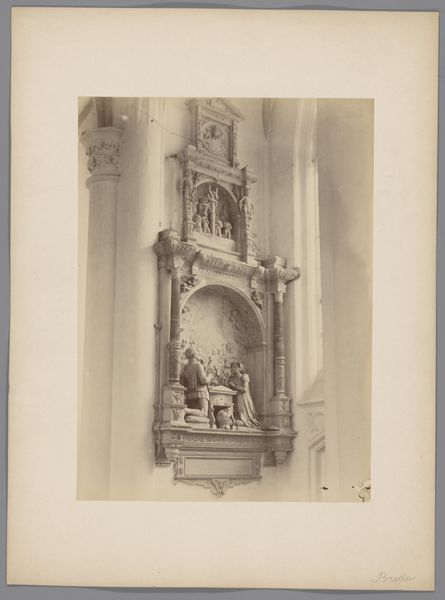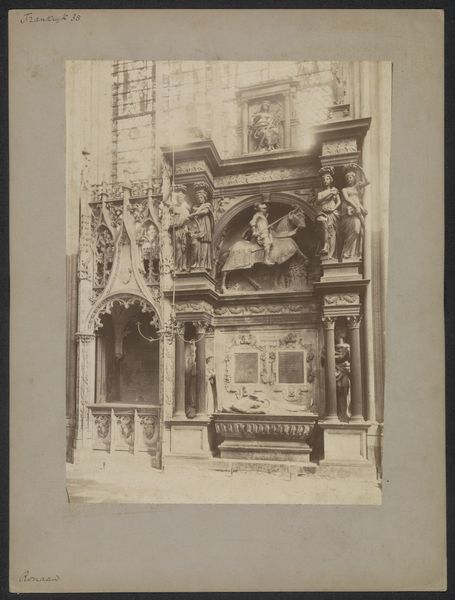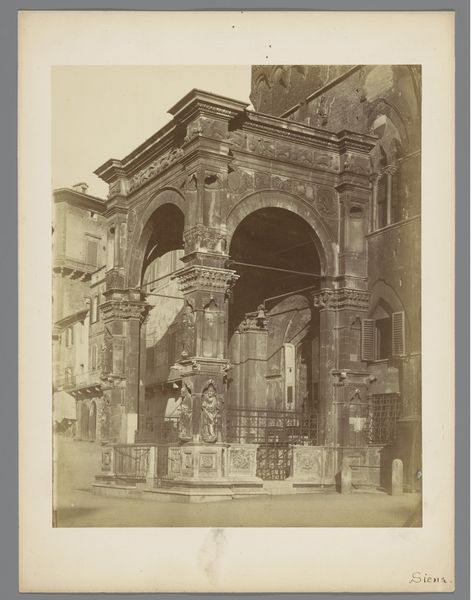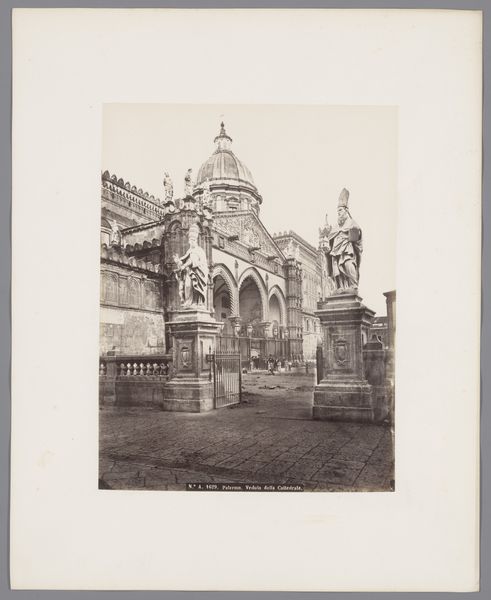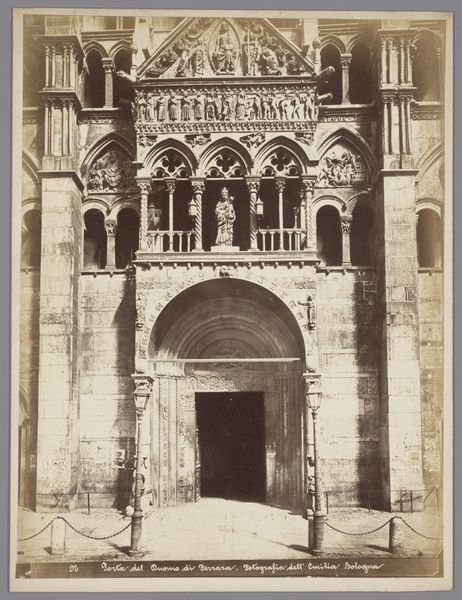
Deel van een gipsafgietsel van het oksaal uit de kathedraal van Limoges in het Musée des monuments français te Parijs c. 1875 - 1900
0:00
0:00
medericmieusement
Rijksmuseum
print, photography, sculpture, gelatin-silver-print, marble
#
portrait
#
toned paper
#
medieval
#
photo restoration
# print
#
photography
#
romanesque
#
carved into stone
#
sculpture
#
gelatin-silver-print
#
cityscape
#
history-painting
#
marble
Dimensions: height 353 mm, width 250 mm
Copyright: Rijks Museum: Open Domain
Editor: This gelatin silver print by Médéric Mieusement, dating from around 1875 to 1900, captures a plaster cast of the rood screen from Limoges Cathedral. The detail is incredible, but it also feels… fragmented, like a memory fading. What strikes you about this piece? Curator: You’ve hit upon something interesting. It’s a photograph of a copy of a medieval sculpture, so there’s a doubling of distance, a layering of removal. Perhaps that’s why it feels so dreamlike, a whisper of something grand and powerful once directly felt. The tones, that sepia wash, soften the details, but do you notice the figures are missing their heads? It’s a bit jarring, isn't it? Almost surreal. Editor: Definitely. It’s unsettling, like these grand figures have been silenced. Why do you think Mieusement chose to photograph a plaster cast instead of the original? Curator: Well, access could have been a factor, or perhaps a fascination with the dissemination of culture through copies. It speaks to a desire to preserve and share history, but also hints at loss. This reproduction carries its own history, doesn’t it? What did you expect when you first saw it? Editor: I thought it was a historical photograph of the actual rood screen, so it felt very old and almost monumental. Knowing it's a cast… I'm now seeing a portrait of a lost idea, or a broken intention, a record of someone trying to recapture the past. Curator: Precisely! And in that act of recapture, something is inevitably transformed. Perhaps even enhanced in its haunting resonance. Each art work bears an echo that may disappear at some moment. I feel fortunate to stand so near such traces and memories, how about you? Editor: Yes! Thinking about layers of time and preservation gives it such depth. Thank you, I’m really seeing it in a completely new light.
Comments
No comments
Be the first to comment and join the conversation on the ultimate creative platform.

